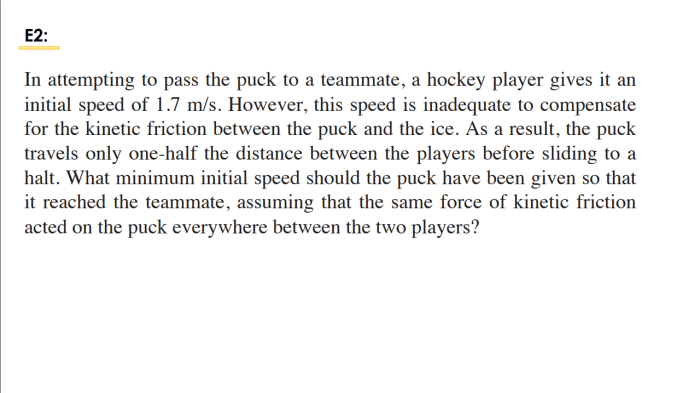In attempting to pass the puck to a teammate – In the fast-paced and exhilarating game of hockey, passing the puck is an essential skill that can determine the outcome of a match. This comprehensive guide delves into the intricate world of puck passing, exploring the impact on puck possession, the types of passes, player positioning, speed and accuracy, decision-making, special situations, and advanced techniques.
By understanding the nuances of puck passing, players and coaches can elevate their performance and achieve greater success on the ice.
Attempting to Pass the Puck: Impact on Puck Possession

In ice hockey, puck possession is crucial for controlling the game and creating scoring opportunities. Attempting to pass the puck to a teammate can significantly impact a team’s possession of the puck, both positively and negatively.
A successful pass can lead to an immediate scoring chance, while an unsuccessful pass can result in a turnover and loss of possession. Therefore, it is essential for players to make quick and accurate decisions when attempting to pass the puck.
Types of Passes
There are various types of passes used in hockey, each with its own strengths and weaknesses:
- Slap pass:A hard, fast pass made with a sweeping motion, ideal for long distances or through traffic.
- Wrist shot:A more controlled pass that allows for greater accuracy, used in close quarters or when shooting on goal.
- Backhand pass:A pass made with the back of the blade, useful for quick passes in tight spaces.
- Cross-ice pass:A diagonal pass from one side of the ice to the other, often used to create scoring chances.
- Drop pass:A pass made by dropping the puck to a teammate behind the puck carrier.
The choice of pass depends on factors such as the distance, angle, and speed of the play.
Player Positioning, In attempting to pass the puck to a teammate
Optimal player positioning is crucial for successful passing. Players should be in a position to receive the pass with their stick on the ice and facing the intended target.
The passing player should have a clear view of the target and be able to make a quick and accurate pass. Communication and teamwork are essential for effective passing, as players must be aware of each other’s positions and intentions.
Commonly Asked Questions: In Attempting To Pass The Puck To A Teammate
What are the key factors to consider when attempting a pass?
Speed, accuracy, player positioning, and the type of pass are all crucial factors to consider when attempting a successful pass.
How does puck possession impact the outcome of a hockey game?
Maintaining puck possession allows teams to control the tempo of the game, create scoring opportunities, and limit the opposition’s chances.
What are the different types of passes used in hockey?
Common passes include wrist shots, slap shots, backhand passes, saucer passes, and behind-the-back passes, each with its own strengths and weaknesses.
